Illinois
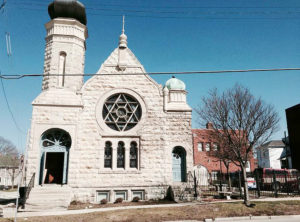 Jews first settled in Chicago in the 1830s. The oldest Jewish community outside of Chicago is Peoria, where the first Jews arrived in 1847. The first congregation, Anshai Emeth, was formed in 1859. Jews settled in Springfield around 1850 and their first synagogue, Brith Sholom, was founded in 1858. Jews first went to Cairo in 1863 and Rock Island in the 1850s. Other early Jewish settlements were at Aurora, 1860; Moline, 1866; Bloomington, 1875; East St. Louis, 1888; Granite City, 1891; Centralia, 1894; and Waukegan, 1897.
Jews first settled in Chicago in the 1830s. The oldest Jewish community outside of Chicago is Peoria, where the first Jews arrived in 1847. The first congregation, Anshai Emeth, was formed in 1859. Jews settled in Springfield around 1850 and their first synagogue, Brith Sholom, was founded in 1858. Jews first went to Cairo in 1863 and Rock Island in the 1850s. Other early Jewish settlements were at Aurora, 1860; Moline, 1866; Bloomington, 1875; East St. Louis, 1888; Granite City, 1891; Centralia, 1894; and Waukegan, 1897.
 The first wave of Eastern European Jewish immigration, started in the 1870s. The Eastern European and German Jewish communities remained separate until the mid-20th century due to different cultural and religious practices and 40 synagogues opened. There were 275,000 Jews in Chicago by 1930. The Niles Township Jewish Congregation, founded in 1959. The earliest communities dating from the 1930s are Winnetka, Glencoe, Highland Park, Evanston, and Oak Park. By the late 1960s there were at least 16 other suburban communities.
The first wave of Eastern European Jewish immigration, started in the 1870s. The Eastern European and German Jewish communities remained separate until the mid-20th century due to different cultural and religious practices and 40 synagogues opened. There were 275,000 Jews in Chicago by 1930. The Niles Township Jewish Congregation, founded in 1959. The earliest communities dating from the 1930s are Winnetka, Glencoe, Highland Park, Evanston, and Oak Park. By the late 1960s there were at least 16 other suburban communities.
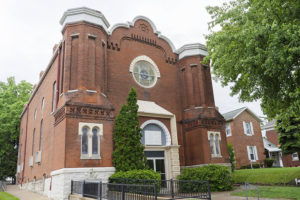 Beyond the Chicago metropolitan area, the Jewish population in the mid-1990s of Champaign-Urbana – 1,500, Springfield – 1,060, Rockford – 1,000, Peoria – 1,000, of Elgin was approximately 600, with smaller numbers in Aurora, Waukegan, Bloomington, Decatur, Kankakee, Danville and Quincy. There were also 2,000 Jews widely scattered in the 63 towns and cities of southern Illinois.
Beyond the Chicago metropolitan area, the Jewish population in the mid-1990s of Champaign-Urbana – 1,500, Springfield – 1,060, Rockford – 1,000, Peoria – 1,000, of Elgin was approximately 600, with smaller numbers in Aurora, Waukegan, Bloomington, Decatur, Kankakee, Danville and Quincy. There were also 2,000 Jews widely scattered in the 63 towns and cities of southern Illinois.
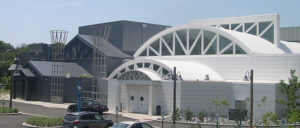 The Illinois Holocaust Museum launched a program called “New Dimensions in Testimony” in December 2017, with the goal of preserving the stories of Holocaust survivors via hologram technology. Thirteen Holocaust survivors sat in movie studios surrounded by green-screens recording thousands of questions and answers for the museum’s exhibit, the first of it’s kind. The exhibit is interactive and visitors to the museum can actually ask questions of the holograms, who answer to the best of their abilities. The technology used in the exhibit was specially developed for this specific project by the USC Shoah Foundation.
The Illinois Holocaust Museum launched a program called “New Dimensions in Testimony” in December 2017, with the goal of preserving the stories of Holocaust survivors via hologram technology. Thirteen Holocaust survivors sat in movie studios surrounded by green-screens recording thousands of questions and answers for the museum’s exhibit, the first of it’s kind. The exhibit is interactive and visitors to the museum can actually ask questions of the holograms, who answer to the best of their abilities. The technology used in the exhibit was specially developed for this specific project by the USC Shoah Foundation.
In 2020 there were 297,735 Jews in Illinois.
Indiana
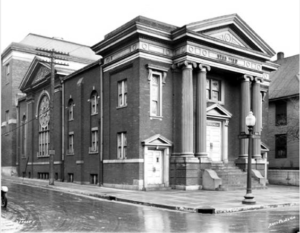 The first Jews to the city came in 1849 from Germany. Many of these Jews were peddlers, who took advantage of the blossoming city. From peddler, they were able to purchase small stores, growing eventually to some of the largest retailers in the state. The Jewish community of Indianapolis was one of the first organized Jewish communities in the country. At that time, Indianapolis received a large influx of demand for Jewish services as people immigrated to the area.
The first Jews to the city came in 1849 from Germany. Many of these Jews were peddlers, who took advantage of the blossoming city. From peddler, they were able to purchase small stores, growing eventually to some of the largest retailers in the state. The Jewish community of Indianapolis was one of the first organized Jewish communities in the country. At that time, Indianapolis received a large influx of demand for Jewish services as people immigrated to the area.
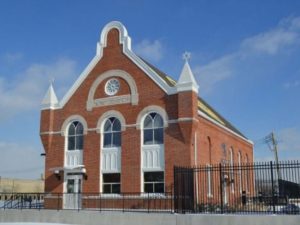 By the late 1860s, Eastern Europeans began moving into the city. What made Indianapolis unique was the ethnic diversity that allowed for many of the ethnic communities to found their own synagogues. In 1870, the Polish immigrants formed a prayer group that became Sharah Tefella. In 1884, the Hungarians organized Congregation Ohev Zedeck, and by 1889 the Russian community founded Knesses Israel. In 1906, a small group of Sephardic Jews settled in the city. Originally from Turkish Macedonia, they spoke Ladino, not Yiddish.These newest immigrants founded Congregation Sephard of Monastir in 1913.
By the late 1860s, Eastern Europeans began moving into the city. What made Indianapolis unique was the ethnic diversity that allowed for many of the ethnic communities to found their own synagogues. In 1870, the Polish immigrants formed a prayer group that became Sharah Tefella. In 1884, the Hungarians organized Congregation Ohev Zedeck, and by 1889 the Russian community founded Knesses Israel. In 1906, a small group of Sephardic Jews settled in the city. Originally from Turkish Macedonia, they spoke Ladino, not Yiddish.These newest immigrants founded Congregation Sephard of Monastir in 1913.
Indianapolis had at least four congregations in the late 1800s and early 1900s. By the 1940s, this number had increased to over eight. By 1856, there were enough families living in the city that fourteen men approved the constitution and by-laws of the Indianapolis Hebrew Congregation (IHC). The IHC would become the Reform synagogue for the city. In 1868, they moved to the Market Street site, where they worshipped until 1899; at that time, they sold the Market Street temple to Ohev Zedeck, the Hungarian Shul.

Ohev Zedeck was formed in 1884 by Hungarian immigrants, renting storefronts for worship. They purchased the Market Street Temple which they occupied until 1927, when the congregation merged with Congregation Beth El (formed in 1915). Knesses Israel was founded in 1889 by a group of Russian immigrants. This Orthodox synagogue was also known as the russische shul. By 1893, they built a new temple; in 1923, they moved out of this facility and built another structure.
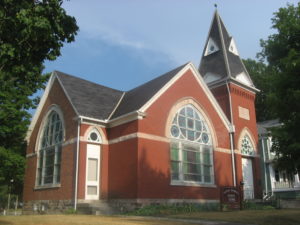 In 1903 the United Hebrew Congregation was formed with the hopes of overcoming the ethnic differences that divided the Orthodox community. Also known as the Union Shul, they dedicated their building in 1904. The Central Hebrew Congregation was founded in 1923. In 1910, Ezras Achim served some of the poorest Jews in the city. Also known as the peddler’s shul, because of the occupation of most of the congregants, the congregation was the last congregation formed by Eastern Europeans.
In 1903 the United Hebrew Congregation was formed with the hopes of overcoming the ethnic differences that divided the Orthodox community. Also known as the Union Shul, they dedicated their building in 1904. The Central Hebrew Congregation was founded in 1923. In 1910, Ezras Achim served some of the poorest Jews in the city. Also known as the peddler’s shul, because of the occupation of most of the congregants, the congregation was the last congregation formed by Eastern Europeans.
In the 1960s and 1970s, the Jewish population of Gary and Hammond moved to nearby Munster, Merrillville, and even as far as the state of Illinois. Federations of Gary and Hammond combined to form the Northwest Indiana Federation which serves all the Jewish communities in that area. In addition to Indianapolis, Ft. Wayne and South Bend have Federations.
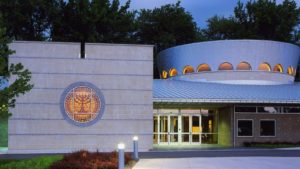 In 1972 the Indiana Jewish Historical Society was organized to collect, preserve, and disseminate the story of the nearly 250 years of the Jewish presence in Indiana. Today, Indianapolis still has a large Jewish population, but the historic community that once thrived on the southside of Indianapolis is all but gone. Only remnants of the community exist today including the cemeteries, a few homes, two temples, and a few pieces of the commercial districts. Some of the structures from the 1920s through the 1970s still exist, but this number continues to decline. In 202 there were 25,145 Jews in Indiana.
In 1972 the Indiana Jewish Historical Society was organized to collect, preserve, and disseminate the story of the nearly 250 years of the Jewish presence in Indiana. Today, Indianapolis still has a large Jewish population, but the historic community that once thrived on the southside of Indianapolis is all but gone. Only remnants of the community exist today including the cemeteries, a few homes, two temples, and a few pieces of the commercial districts. Some of the structures from the 1920s through the 1970s still exist, but this number continues to decline. In 202 there were 25,145 Jews in Indiana.
Iowa
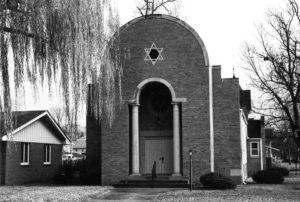 In 1848, Jewish settlers moved to the new towns being built along Iowa’s rivers. In communities along the Mississippi, Des Moines, Iowa and Missouri Rivers, many Jewish settlers sold shoes, clothes, food and supplies or worked as teachers, doctors, and lawyers. Almost all the Jews who moved to Iowa before 1900 were emigrants from Germany, who left Germany because of anti-Semitism, and hoped to be able to practice Judaism in peace, in the United States. Most of these early Jewish immigrants were middle-class business people. By 1878 about 1,000 Jews had settled in Iowa. During the late 1800s the number of Jews in Iowa increased to 3,000.
In 1848, Jewish settlers moved to the new towns being built along Iowa’s rivers. In communities along the Mississippi, Des Moines, Iowa and Missouri Rivers, many Jewish settlers sold shoes, clothes, food and supplies or worked as teachers, doctors, and lawyers. Almost all the Jews who moved to Iowa before 1900 were emigrants from Germany, who left Germany because of anti-Semitism, and hoped to be able to practice Judaism in peace, in the United States. Most of these early Jewish immigrants were middle-class business people. By 1878 about 1,000 Jews had settled in Iowa. During the late 1800s the number of Jews in Iowa increased to 3,000.
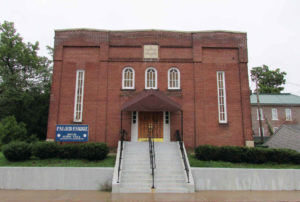 In the early 1900s many more Jews arrived in Iowa, but their customs and histories were different from the German Jews who had settled here earlier. Most of these new Jewish immigrants were from eastern Europe, particularly Russia. They spoke Yiddish. By 1916 the Jewish population of the state had risen from 3,000 to 9,000.
In the early 1900s many more Jews arrived in Iowa, but their customs and histories were different from the German Jews who had settled here earlier. Most of these new Jewish immigrants were from eastern Europe, particularly Russia. They spoke Yiddish. By 1916 the Jewish population of the state had risen from 3,000 to 9,000.
The period between the wars was a transition from the immigrant Jewish culture to an Iowan Jewish culture. In the 1950s, the total Jewish population reached its prewar high of about 18,000, but by the 1960s, it had lost about quarter of this number and by the 1980s, the population was less than 10,000.
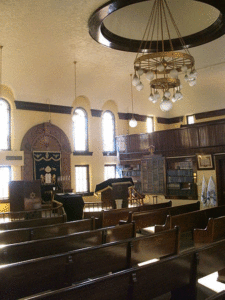 Ottumwa’s synagogue was once standing room only on high holidays, but now is facing closure in what’s become a common occurrence in Iowa and the midwest. When the temple was founded in 1915, it numbered several hundred people. Today there are just seven members, and they know the inevitable is looming: B’nai Jacob will soon dissolve, joining the list of small-town synagogues that have disappeared, closing a critical chapter of Iowa’s Jewish story.
Ottumwa’s synagogue was once standing room only on high holidays, but now is facing closure in what’s become a common occurrence in Iowa and the midwest. When the temple was founded in 1915, it numbered several hundred people. Today there are just seven members, and they know the inevitable is looming: B’nai Jacob will soon dissolve, joining the list of small-town synagogues that have disappeared, closing a critical chapter of Iowa’s Jewish story.
Small, centenarian shuls in tiny towns like Ottumwa, Oskaloosa and Fort Dodge – a pillar of Judaism in Iowa, built by the state’s oldest Jewish families – that have all but disappeared from public life.
In 2020, Iowa had about 5,475 Jews. The largest Jewish community was in Des Moines (3,500), where there are four synagogues.
Kansas
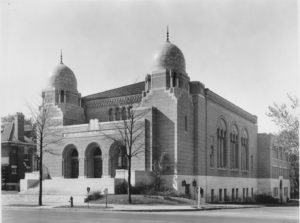 The first Jewish settlers began arriving soon after Kansas Territory was established in 1854. Most of the original Jewish families were of German and Austrian origin.The state’s first Jewish cemetery was the Mt. Zion Cemetery Association, founded in Leavenworth in 1857. That city was also the site of the state’s earliest congregation, B’nai Jeshurun, which was formed in 1859. An Orthodox congregation, Beth Jacob, was organized much later. The second congregation to be formed in Kansas was Emanu-El, of Wichita, in 1885. With the arrival of these Jews fleeing the pogroms of Russia and Poland, an Orthodox synagogue, Ahavat Achim Hebrew Congregation, was formed in 1907.
The first Jewish settlers began arriving soon after Kansas Territory was established in 1854. Most of the original Jewish families were of German and Austrian origin.The state’s first Jewish cemetery was the Mt. Zion Cemetery Association, founded in Leavenworth in 1857. That city was also the site of the state’s earliest congregation, B’nai Jeshurun, which was formed in 1859. An Orthodox congregation, Beth Jacob, was organized much later. The second congregation to be formed in Kansas was Emanu-El, of Wichita, in 1885. With the arrival of these Jews fleeing the pogroms of Russia and Poland, an Orthodox synagogue, Ahavat Achim Hebrew Congregation, was formed in 1907.
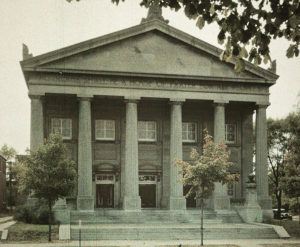 In 1917 the Jewish Community Center of Kansas City, Kansas first opened its doors. In 1924 Congregation Beth Shalom was organized in Topeka, and the city of Hutchinson which for a while had its own synagogue, El Dorado. Many Jews were scattered among the smaller Kansas communities, where often there was not a sufficient number to organize a congregation. There are old Jewish cemeteries in Atchinson, Fort Scott, and Eudora, indicating that these towns once had Jewish communities, which have since disappeared.
In 1917 the Jewish Community Center of Kansas City, Kansas first opened its doors. In 1924 Congregation Beth Shalom was organized in Topeka, and the city of Hutchinson which for a while had its own synagogue, El Dorado. Many Jews were scattered among the smaller Kansas communities, where often there was not a sufficient number to organize a congregation. There are old Jewish cemeteries in Atchinson, Fort Scott, and Eudora, indicating that these towns once had Jewish communities, which have since disappeared.
Two synagogues, were constructed in the early 1930s: the Hebrew Congregation in 1930 and the Congregation Emanu-El in 1932. In 1936, there were 5,260 Jews in Kansas and 8 temples and synagogues.
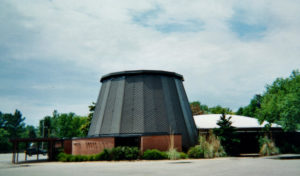 Congregation Beth Israel Abraham & Voliner, fondly referred to as “BIAV,” dates back to 1890, when minyan meetings were held in the Hammerslough Building at Fifth & Main Streets in Kansas City, MO. The group that gathered was called Etz Chaim (Tree of Life), and in 1894 it founded the Tefereth Israel Congregation. In 1959, the congregation moved to 83rd and Holmes as part of a merger with two other congregations, Beth Abraham and Beth Medresh Hagadol, becoming Beth Israel Abraham. It then merged in 1960 with Voliner Anshei Sefard to become Congregation Beth Israel Abraham and Voliner.
Congregation Beth Israel Abraham & Voliner, fondly referred to as “BIAV,” dates back to 1890, when minyan meetings were held in the Hammerslough Building at Fifth & Main Streets in Kansas City, MO. The group that gathered was called Etz Chaim (Tree of Life), and in 1894 it founded the Tefereth Israel Congregation. In 1959, the congregation moved to 83rd and Holmes as part of a merger with two other congregations, Beth Abraham and Beth Medresh Hagadol, becoming Beth Israel Abraham. It then merged in 1960 with Voliner Anshei Sefard to become Congregation Beth Israel Abraham and Voliner.
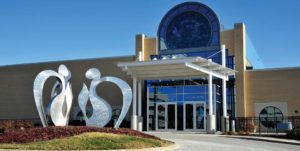 In the late 1980’s, a number of families from the former Soviet Union added to the diversity of a population that continues to develop and change with the city. In the early 21st century the Kansas City metropolitan area contained 12 synagogues, 7 Jewish cemeteries, and several new organizations devoted to Jewish life.
In the late 1980’s, a number of families from the former Soviet Union added to the diversity of a population that continues to develop and change with the city. In the early 21st century the Kansas City metropolitan area contained 12 synagogues, 7 Jewish cemeteries, and several new organizations devoted to Jewish life.
Today many of the Jews in the Greater Kansas City area have moved out of the city centre and into suburbs such as Overland Park. Overland Park has become the new centre of the Jewish community in Greater Kansas City. Several Jewish institutions have moved into Overland Park in recent decades, including the Jewish Historical Society.
With a Jewish population of 20,000, Kansas City has a K-12 day school, and 2 Jewish preschools.
Michigan
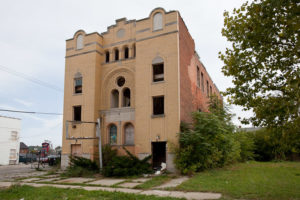 Temple Beth El, the first Jewish congregation in the state of Michigan, was established in Detroit in 1850. The founders of Beth El were German immigrants. They hired their first rabbi, and purchased land for a cemetery. They established a day school for their children. In 1861, the congregation purchased its first permanent home on Rivard Street. The congregation introduced instrumental music and a mixed choir in services. This was contrary to the practices of Orthodox Judaism and led seventeen families to resign and create what is now Congregation Shaarey Zedek.
Temple Beth El, the first Jewish congregation in the state of Michigan, was established in Detroit in 1850. The founders of Beth El were German immigrants. They hired their first rabbi, and purchased land for a cemetery. They established a day school for their children. In 1861, the congregation purchased its first permanent home on Rivard Street. The congregation introduced instrumental music and a mixed choir in services. This was contrary to the practices of Orthodox Judaism and led seventeen families to resign and create what is now Congregation Shaarey Zedek.
Other changes followed, including permitting men and women to sit together, the introduction of Confirmation, abolishing the wearing of a tallit, and the use of a new American prayer book. The first confirmation ceremony took place in 1862. By 1867, the congregation had outgrown its quarters and purchased a new building. The day school was discontinued and replaced by a religious school that supplemented the students’ public school education.
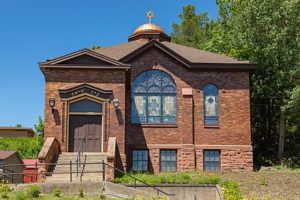 The oldest synagogue building in continuous use, opened in Traverse City in 1885. A second synagogue was founded in 1896 in nearby Petoskey. Both continue in active use, serving local Jews as well as summer and winter vacationers. Michigan’s first Jewish cemetery was established in 1848. The site is on the east lawn of University of Michigan’s Rackham Building, noted with a historical plaque.
The oldest synagogue building in continuous use, opened in Traverse City in 1885. A second synagogue was founded in 1896 in nearby Petoskey. Both continue in active use, serving local Jews as well as summer and winter vacationers. Michigan’s first Jewish cemetery was established in 1848. The site is on the east lawn of University of Michigan’s Rackham Building, noted with a historical plaque.
On September 2, 1911, nine Hungarian Jewish men organized a new synagogue – Beit Eliyahu, to continue their European traditions. In 1917, the growing congregation decided to erect its first permanent home. Short of funds, they sold the name of the congregation to the highest bidder. The sons of Moshe Gunsberg raised the most money, and renamed the shul “B’nai Moshe,” the Sons of Moshe.
 The Isaac Agree Downtown Synagogue (IADS) was established in 1921, at a time when there were many synagogues located in Detroit. Its principal mission was to address the unmet needs of the Jewish community, particularly for those who worked downtown, were unaffiliated with another synagogue, or were visiting the city, by providing an egalitarian Jewish presence, rooted in tradition, in the heart of Detroit. One of IADS’s principal missions was to provide an accessible and open space of worship and celebration for everyone.The Synagogue is currently housed in a historic four-story building, a building that it has occupied and owned since the early 1960s.
The Isaac Agree Downtown Synagogue (IADS) was established in 1921, at a time when there were many synagogues located in Detroit. Its principal mission was to address the unmet needs of the Jewish community, particularly for those who worked downtown, were unaffiliated with another synagogue, or were visiting the city, by providing an egalitarian Jewish presence, rooted in tradition, in the heart of Detroit. One of IADS’s principal missions was to provide an accessible and open space of worship and celebration for everyone.The Synagogue is currently housed in a historic four-story building, a building that it has occupied and owned since the early 1960s.
 Congregation Beth Abraham was established in 1892. The synagogue moved several times before moving to its present location in West Bloomfield in August of 1971. In 1971, the 30 year old Congregation Beth Hillel and its 150 families joined Beth Abraham to become Beth Abraham Hillel. In 1975 a merger with Congregation Beth Moses was completed.
Congregation Beth Abraham was established in 1892. The synagogue moved several times before moving to its present location in West Bloomfield in August of 1971. In 1971, the 30 year old Congregation Beth Hillel and its 150 families joined Beth Abraham to become Beth Abraham Hillel. In 1975 a merger with Congregation Beth Moses was completed.
Adat Shalom Synagogue began modestly in 1943 to serve the religious needs of the Jewish community in Northwest Detroit. Membership grew dramatically, and the need for permanent quarters became evident. A new synagogue complex was built at Middlebelt and the first services were held in 1973.
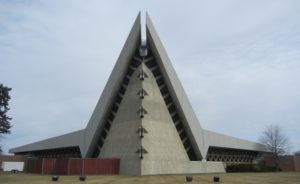 In the 1980s many Russian Jews arrived in Metro Detroit because of the Soviet Union’s 1988 relaxation of travel restrictions and the processes of its dissolution. Oak Park received most of these Russian Jews. The Metro Detroit Jewish community helped thousands of these Soviet Jews travel to Michigan. In the 1990s, with a total Michigan population of 9,478,000, there were 107,000 Jews statewide, with a Jewish population of 96,000 in metropolitan Detroit, the greater majority in the nearby Oakland County suburbs. As of 2029, Michigan’s Jewish population was approximately 87,905 people.
In the 1980s many Russian Jews arrived in Metro Detroit because of the Soviet Union’s 1988 relaxation of travel restrictions and the processes of its dissolution. Oak Park received most of these Russian Jews. The Metro Detroit Jewish community helped thousands of these Soviet Jews travel to Michigan. In the 1990s, with a total Michigan population of 9,478,000, there were 107,000 Jews statewide, with a Jewish population of 96,000 in metropolitan Detroit, the greater majority in the nearby Oakland County suburbs. As of 2029, Michigan’s Jewish population was approximately 87,905 people.
Minnesota
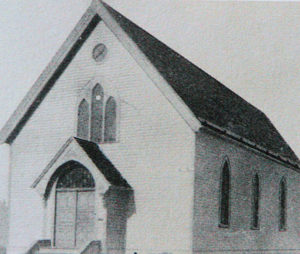 Jews have lived in Minnesota since it was created as a territory in 1849. As with many immigrants, they came to the United States to escape religious and political persecution. The first Jewish community of Minnesota was established in St. Paul, by German Jews. By 1856, they formed Mount Zion. Minneapolis just upriver did not grow until the advent of the railroad system. The second wave of Jews came from Eastern Europe to escape from economic unrest, pogroms, and the Tsar’s draft. As Eastern-European Jews moved into Minneapolis, they self-segregated and formed their own distinctive communities.
Jews have lived in Minnesota since it was created as a territory in 1849. As with many immigrants, they came to the United States to escape religious and political persecution. The first Jewish community of Minnesota was established in St. Paul, by German Jews. By 1856, they formed Mount Zion. Minneapolis just upriver did not grow until the advent of the railroad system. The second wave of Jews came from Eastern Europe to escape from economic unrest, pogroms, and the Tsar’s draft. As Eastern-European Jews moved into Minneapolis, they self-segregated and formed their own distinctive communities.
Between 1884 and 1905, the Jewish community in North Minneapolis created 11 Orthodox synagogues, including Kenesseth Israel, which eventually moved to St. Louis Park. By 1910, St. Paul’s three major Jewish residential areas were home to between forty-five hundred and five thousand of Minnesota’s total Jewish population of thirteen thousand.
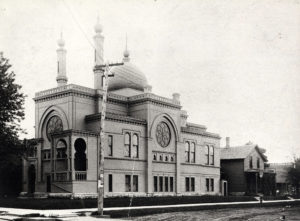 The largest and best-known Jewish neighborhood was Minneapolis’ North Side. Through World War II, North Minneapolis had the largest concentration of Jews in the Upper Midwest between Chicago and Denver. As late as 1947, almost half of Minneapolis Jews worked blue-collar jobs. By 1971, only 8.8 percent of Minneapolis Jews were classified as working class. Educational levels and median incomes were higher for Jews than their Hennepin County neighbors.
The largest and best-known Jewish neighborhood was Minneapolis’ North Side. Through World War II, North Minneapolis had the largest concentration of Jews in the Upper Midwest between Chicago and Denver. As late as 1947, almost half of Minneapolis Jews worked blue-collar jobs. By 1971, only 8.8 percent of Minneapolis Jews were classified as working class. Educational levels and median incomes were higher for Jews than their Hennepin County neighbors.
A third wave of Jewish immigration to Minnesota began in 1971 and continued into the late 1980s. This group, from the Soviet Union, was permitted to emigrate after years of refusal. The breakup of the Soviet Union in 1989 brought more immigrants. By 2000, Jews from the Former Soviet Union (FSU) made up approximately 10 percent of Minnesota’s Jewish population.
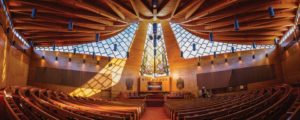 The Jewish population in Minnesota has mainly been concentrated in the Twin Cities and Duluth, with smaller groups on the Iron Range and in Rochester. Jewish communities have thrived in Minnesota, becoming successful and lively centres of religion and culture. In 2020, there were 65,900 Jews in Minnesota.
The Jewish population in Minnesota has mainly been concentrated in the Twin Cities and Duluth, with smaller groups on the Iron Range and in Rochester. Jewish communities have thrived in Minnesota, becoming successful and lively centres of religion and culture. In 2020, there were 65,900 Jews in Minnesota.
Missouri
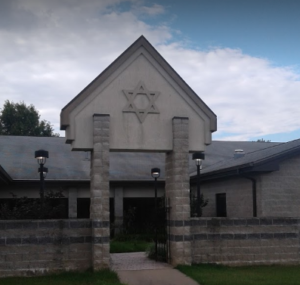 The earliest evidence of a Jew settling in St. Louis is that of Joseph Philipson from Pennsylvania, in 1807 and opened a store. In 1808, Joseph’s brother Jacob arrived in St. Louis and established his own store. Until 1816 the Philipsons were the only Jews known to live in St. Louis.
The earliest evidence of a Jew settling in St. Louis is that of Joseph Philipson from Pennsylvania, in 1807 and opened a store. In 1808, Joseph’s brother Jacob arrived in St. Louis and established his own store. Until 1816 the Philipsons were the only Jews known to live in St. Louis.
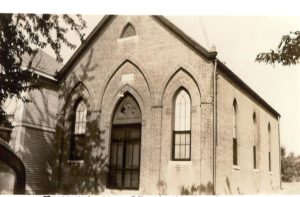 It was not until 1836, that the first religious services were held. The following year, the United Hebrew Congregation, was established. In 1855 this organization erected a temple, which was consecrated on June 17, 1859.
It was not until 1836, that the first religious services were held. The following year, the United Hebrew Congregation, was established. In 1855 this organization erected a temple, which was consecrated on June 17, 1859.
Around the same time the B’nai El congregation was established. This was followed, in 1866 with Shaare Emeth. In 1886 a number of the members, set up the Congregation Temple Israel.
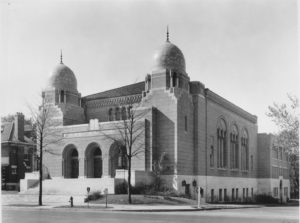 The earliest cemetery was set up in 1844 and used until 1856, when the United Hebrew Congregation acquired the Mount Olive Cemetery. The B’nai El congregation set up the Mount Sinai Cemetery, in 1849.
The earliest cemetery was set up in 1844 and used until 1856, when the United Hebrew Congregation acquired the Mount Olive Cemetery. The B’nai El congregation set up the Mount Sinai Cemetery, in 1849.
 By mid-century the Jewish population in St. Louis increased to between 600 and 700 due to the German immigration of 1848–53, which also led to a Jewish influx into St. Joseph and Kansas City where congregations were established in 1860 and 1870 respectively. Congregations were established in the mid-1880s in the state capital, Jefferson City, and by 1905 in both Springfield (south-central) and Joplin (southwest). By 1950 regular services were being held at University of Missouri Hillel in Columbia, Fort Leonard Wood, and in Cape Girardeau (southeast). By the early 1960s the Jews of Sedalia (west-central) had organized their own congregation.
By mid-century the Jewish population in St. Louis increased to between 600 and 700 due to the German immigration of 1848–53, which also led to a Jewish influx into St. Joseph and Kansas City where congregations were established in 1860 and 1870 respectively. Congregations were established in the mid-1880s in the state capital, Jefferson City, and by 1905 in both Springfield (south-central) and Joplin (southwest). By 1950 regular services were being held at University of Missouri Hillel in Columbia, Fort Leonard Wood, and in Cape Girardeau (southeast). By the early 1960s the Jews of Sedalia (west-central) had organized their own congregation.
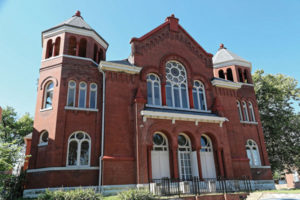 The Jewish population of Missouri in 2001 was 62,500, out of a general population of 5,603,000 with almost all Jews living in the St. Louis (54,000) and Kansas City (7,100 on the Missouri side) metropolitan areas. About 1,600 Jews live in at least 27 smaller towns, in eight of which there are congregations. There are communities in Columbia (400), Joplin (100), St. Joseph (265), and Springfield (300), and 12 synagogues in parts of the state other than the two major centers.
The Jewish population of Missouri in 2001 was 62,500, out of a general population of 5,603,000 with almost all Jews living in the St. Louis (54,000) and Kansas City (7,100 on the Missouri side) metropolitan areas. About 1,600 Jews live in at least 27 smaller towns, in eight of which there are congregations. There are communities in Columbia (400), Joplin (100), St. Joseph (265), and Springfield (300), and 12 synagogues in parts of the state other than the two major centers.
As of 2020, Missouri’s Jewish population was approximately 64,275 people.
Ohio
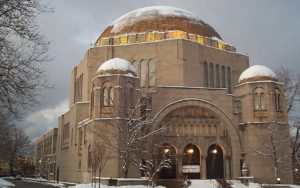 The history of Jews in Ohio dates back to 1817, when Joseph Jonas, a pioneer, came from England with a number of English Orthodox Jews, in 1819. In 1824, the first Jewish congregation, B’ne Israel, was formed. In the next two decades there were a number of German immigrants who, were mostly Reform. A second colony was formed in Cleveland, in 1837. The same decade saw an influx of German Jews from Unsleben, Bavaria, into Cincinnati, and these in 1841 founded the Bene Yeshurun congregation. In 1850 Ohio had six congregations: four in Cincinnati and two in Cleveland.
The history of Jews in Ohio dates back to 1817, when Joseph Jonas, a pioneer, came from England with a number of English Orthodox Jews, in 1819. In 1824, the first Jewish congregation, B’ne Israel, was formed. In the next two decades there were a number of German immigrants who, were mostly Reform. A second colony was formed in Cleveland, in 1837. The same decade saw an influx of German Jews from Unsleben, Bavaria, into Cincinnati, and these in 1841 founded the Bene Yeshurun congregation. In 1850 Ohio had six congregations: four in Cincinnati and two in Cleveland.
 After the middle of the 19th century, congregations sprang up throughout the state, and by 1880, Ohio had a Jewish population of 6,581. With the influx of eastern European immigration beginning in the 1880s, the largest of Ohio’s Jewish communities created complex organizational structures, which often included federations, social settlements, educational bureaus, hospitals, homes for the aged, schools, labor unions, and social and benevolent societies.
After the middle of the 19th century, congregations sprang up throughout the state, and by 1880, Ohio had a Jewish population of 6,581. With the influx of eastern European immigration beginning in the 1880s, the largest of Ohio’s Jewish communities created complex organizational structures, which often included federations, social settlements, educational bureaus, hospitals, homes for the aged, schools, labor unions, and social and benevolent societies.
The number of Jews in Ohio in 1904 was about 50,000. Prior to the Civil War, five other Jewish communities were founded: Columbus (1838); Dayton (1850); Hamilton (1855); Piqua (1858); and Portsmouth (1858). Throughout the German Jewish immigration period (through the 1870s) communities were also established in Youngstown, Akron, Toledo, and Canton.
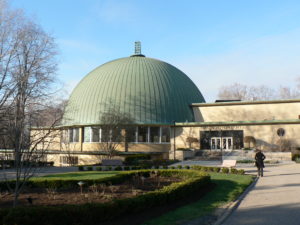 After World War II, there was increased movement of Jewish populations to the suburbs of Roselawn, Golf Manor, and Amberley Village of Cincinnati; Bexley of Columbus; and the “Heights” – Shaker, Cleveland, and University – of Cleveland, as well as Beachwood, which became about 80 percent Jewish. In 2001 the major Jewish communities in Ohio were in the metropolitan areas of Cleveland (81,500), Cincinnati (22,500), Columbus (22,000), Dayton (5,000), Akron (3,500), Toledo (5,900), Youngstown (3,200), and Canton (1,500).
After World War II, there was increased movement of Jewish populations to the suburbs of Roselawn, Golf Manor, and Amberley Village of Cincinnati; Bexley of Columbus; and the “Heights” – Shaker, Cleveland, and University – of Cleveland, as well as Beachwood, which became about 80 percent Jewish. In 2001 the major Jewish communities in Ohio were in the metropolitan areas of Cleveland (81,500), Cincinnati (22,500), Columbus (22,000), Dayton (5,000), Akron (3,500), Toledo (5,900), Youngstown (3,200), and Canton (1,500).
In 1920, there were 151,615 Jews in Ohio.
Nebraska
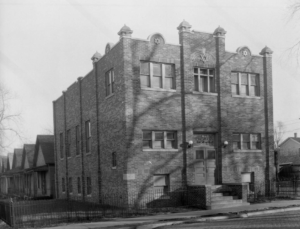 The history of the Jews in Omaha, Nebraska, goes back to the mid-1850s. In 1871, the Temple Israel was founded as the first Jewish congregation in Nebraska and in 1884 the congregation dedicated the first synagogue in Omaha. One of the most colourful figures in early Jewish life in Nebraska was Julius Meyer, who settled in Omaha in 1866 and became a successful Indian trader. He mastered at least six tribal dialects, was adopted into the Pawnee tribe, and was given the name “curly-headed-white-chief-with-one-tongue.” He later became a government interpreter for the Indians.
The history of the Jews in Omaha, Nebraska, goes back to the mid-1850s. In 1871, the Temple Israel was founded as the first Jewish congregation in Nebraska and in 1884 the congregation dedicated the first synagogue in Omaha. One of the most colourful figures in early Jewish life in Nebraska was Julius Meyer, who settled in Omaha in 1866 and became a successful Indian trader. He mastered at least six tribal dialects, was adopted into the Pawnee tribe, and was given the name “curly-headed-white-chief-with-one-tongue.” He later became a government interpreter for the Indians.
 The seventies and eighties brought a large Hungarian and German element. After 1881, Russian and Eastern European Jews began to arrive in large numbers. By 1890 there were 1,035 Jews in Omaha. A Reform congregation, B’nai Yeshurun, was established in Lincoln, Nebraska. In the early 20th century, Anshe Sholom a Hungarian congregation was established as well as B’nai Jacob, a Conservative congregation.
The seventies and eighties brought a large Hungarian and German element. After 1881, Russian and Eastern European Jews began to arrive in large numbers. By 1890 there were 1,035 Jews in Omaha. A Reform congregation, B’nai Yeshurun, was established in Lincoln, Nebraska. In the early 20th century, Anshe Sholom a Hungarian congregation was established as well as B’nai Jacob, a Conservative congregation.
Between 1901 and 1913 over 2000 Jews arrived with the help of the Jewish Agricultural Industrial Aid Society and the Jewish Colonization Office. The Beth Hamedrosh Adas Jeshurun synagogue at 2531 Seward Street in the Long School neighborhood in 1925. It still stands today, but hasn’t been a synagogue for 50 years. Today, Omaha’s Jewish community is spread throughout the city, and no synagogues or shuls are left in North Omaha, although there are Jewish cemeteries there.
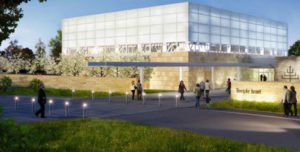 In 1930, the census showed 2,084 Jewish Russians in Omaha, many of whom were first-generation immigrants.
In 1930, the census showed 2,084 Jewish Russians in Omaha, many of whom were first-generation immigrants.
New Jewish immigrants have come to the city from Russia and Eastern Europe since the 1980s. However, only Omaha and Lincoln sustain organized Jewish community life. Lincoln has two congregations, one Conservative and one Reform. Today there are 9,350 Jews in Nebraska.
North Dakota
 At least 800 Jews filed for land between 1880 and 1916. Many were aided by the Jewish Agricultural and Industrial Aid Society. They endured great hardships such as plagues of grasshoppers, prairie fires, blizzards and drought. A permanent congregation was established in 1892 and the B’nai Israel Synagogue.
At least 800 Jews filed for land between 1880 and 1916. Many were aided by the Jewish Agricultural and Industrial Aid Society. They endured great hardships such as plagues of grasshoppers, prairie fires, blizzards and drought. A permanent congregation was established in 1892 and the B’nai Israel Synagogue.
In 1896 a synagogue was established at Fargo. Jews also settled in: Grand Forks, Bismarck, and Minot where they established synagogues and other elements of Jewish communal life.
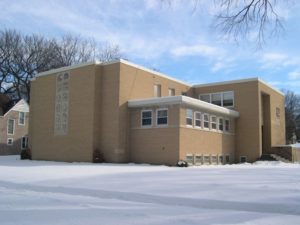 In the 1960s the Jewish population of Fargo was some 500 people; it has declined as young people leave and do not return.
In the 1960s the Jewish population of Fargo was some 500 people; it has declined as young people leave and do not return.
North Dakota has two active synagogues: B’nai Israel Congregation in Grand Forks and Temple Beth El in Fargo. As of 2020, North Dakota’s Jewish population was approximately 400 people.
B’nai Israel Synagogue in Grand Forks, North Dakota is a small but vibrant congregation that provides lifelong opportunities for spiritual growth and learning based on modern Jewish values.
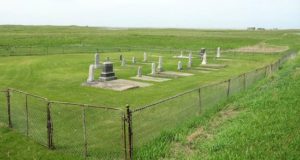 Temple Beth El in Fargo is a “reform” synagogue that calls itself the Home Of the Frozen Chosen.
Temple Beth El in Fargo is a “reform” synagogue that calls itself the Home Of the Frozen Chosen.
B’nai Israel Congegration, also a reform synagogue, serves the Jewish community in Grand Forks as well as Grand Forks AFB. Both synagogues welcome Jews of all denominations.
In 2006, Sons of Jacob, a Jewish pioneer cemetery in the Devil’s Lake area, was rededicated.
South Dakota
 The first Jews to settle in South Dakota established themselves in Deadwood during the Gold Rush as early as 1876, finding a niche selling hardware, groceries, dry goods and more. German and Russian Jews settled in the Black Hills following the 1876 gold rush. Two utopian agricultural communities, Cremieux and Bethlehem Yehudah, were founded in 1882, but were defunct by 1885. There were once congregations in Deadwood, Lead, Sioux Falls, Aberdeen, and at Ellsworth Air Force Base in Rapid City.
The first Jews to settle in South Dakota established themselves in Deadwood during the Gold Rush as early as 1876, finding a niche selling hardware, groceries, dry goods and more. German and Russian Jews settled in the Black Hills following the 1876 gold rush. Two utopian agricultural communities, Cremieux and Bethlehem Yehudah, were founded in 1882, but were defunct by 1885. There were once congregations in Deadwood, Lead, Sioux Falls, Aberdeen, and at Ellsworth Air Force Base in Rapid City.
By 1920, the state was home to some 1,300 Jews. Aberdeen’s B’nai Isaac synagogue is celebrating its 100th anniversary. Congregation B’nai Isaac was incorporated in 1917.
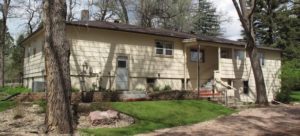 Today there are two active synagogues in South Dakota — Synagogue of the Hills in Rapid City and Mount Zion Temple in Sioux Falls. South Dakota’s Jewish community, is centred around them. They are struggling to stay afloat as numbers shrink. Both are served by student rabbis.
Today there are two active synagogues in South Dakota — Synagogue of the Hills in Rapid City and Mount Zion Temple in Sioux Falls. South Dakota’s Jewish community, is centred around them. They are struggling to stay afloat as numbers shrink. Both are served by student rabbis.
Although there is no clear number, The closest estimate of the Jewish population in South Dakota is around 250 people, making it the smallest Jewish population of any state in the country.
Wisconsin
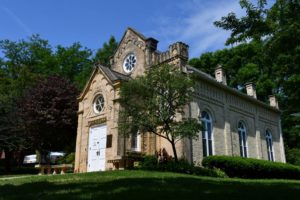 Jewish immigration to Wisconsin occurred over a long period beginning in the mid-to-late 18th century and continuing into the 20th century. This time period can be broken into three main segments based on where most of these immigrants came from. The first few Jews to settle in Wisconsin came in the 18th century and were of English or Canadian background. The second group came from Central Europe, primarily Germany, between 1830 and 1880. The third and largest group came from Eastern Europe, beginning in the late 1880s and continuing through the early 20th century.
Jewish immigration to Wisconsin occurred over a long period beginning in the mid-to-late 18th century and continuing into the 20th century. This time period can be broken into three main segments based on where most of these immigrants came from. The first few Jews to settle in Wisconsin came in the 18th century and were of English or Canadian background. The second group came from Central Europe, primarily Germany, between 1830 and 1880. The third and largest group came from Eastern Europe, beginning in the late 1880s and continuing through the early 20th century.
The first organized Jewish community emerged in Milwaukee. The Emanu-El Cemetery Association, formed in 1848, was the foundation for the state’s first Jewish congregation. Wisconsin’s first synagogue building was built in Milwaukee in 1856. Wisconsin’s second Jewish community emerged in Madison in the 1850s. Another community formed in La Crosse in the latter decades of the 19th century.
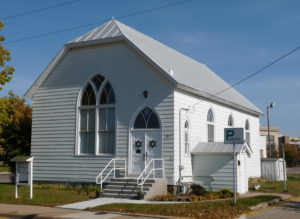 Between 1880 and 1920, millions of eastern European and Russian Jews arrived. In 1880, 2,559 Jews lived in Wisconsin; by 1889, 10,000. The majority of Russian Jews stayed in Milwaukee but communities began to emerge in smaller Wisconsin towns in the 1880s. After World War II, about 1,000 Jewish survivors of the Nazi Holocaust settled in Wisconsin.
Between 1880 and 1920, millions of eastern European and Russian Jews arrived. In 1880, 2,559 Jews lived in Wisconsin; by 1889, 10,000. The majority of Russian Jews stayed in Milwaukee but communities began to emerge in smaller Wisconsin towns in the 1880s. After World War II, about 1,000 Jewish survivors of the Nazi Holocaust settled in Wisconsin.
The next wave of immigrants arrived in Milwaukee when the Nazi party came to power in Germany in the 1930s. Smaller in size, but important in their later influence, these initially impoverished families drew upon familial connections to obtain affidavits to come to Southeast Wisconsin. After the close of World War II, several hundred more, this time survivors of the Holocaust, were able to settle in the area.
During the 1950s, the city of Milwaukee maintained varied congregations where Jews could express their religious faith in whatever way they chose, be it Orthodox, Conservative or Reform. Temple Beth El, which was founded in 1939, dedicated its new building the same year.
 In the last part of the twentieth century, the most notable group has been a large cohort from the former Soviet Union, arriving from the late 1970s through the 1990s. During the last half of the twentieth century and into the twenty-first, Jewish day school education grew significantly, from the first all-day school with a double curriculum in 1960 to three elementary schools, two high schools, and two pre-schools. Today the Madison Jewish community numbers more than 5,000 individuals and the state has a total number of 33,455 Jews.
In the last part of the twentieth century, the most notable group has been a large cohort from the former Soviet Union, arriving from the late 1970s through the 1990s. During the last half of the twentieth century and into the twenty-first, Jewish day school education grew significantly, from the first all-day school with a double curriculum in 1960 to three elementary schools, two high schools, and two pre-schools. Today the Madison Jewish community numbers more than 5,000 individuals and the state has a total number of 33,455 Jews.